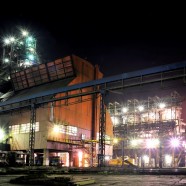
Industry uses about one third of all the energy consumed in this country, but most companies don’t have a comprehensive policy for saving energy. It takes a combination of the best technology upgrades and best practice efficiency for your company to show its best reduction in use, but with careful strategy and implementation you can find ways to achieve positive results.
#1: Look for Financial Incentives
Doing an energy upgrade to your business may be a daunting proposition, but there are many financial incentives that can take the sting out of an otherwise pricey project. Commercial and governmental agencies have all given great weight to industrial energy savings, and are rewarding business owners who comply with new standards. Depending on your industry, you may find:
- Loans, rebates, or grants to help cover the cost of any retrofitting or installation of new equipment or supplies
- Income tax deductions for business owners or businesses for following stricter energy use standards
- Reduced sales tax or tax exemptions on certain energy-efficient products
- State government or utility company financial incentives
#2: Review Your Energy Plan
The first step in reducing your industry’s energy use is to develop a comprehensive reduction plan. Get a professional electrical contractor to inspect your physical plant as well as observing your day-to-day operations. New habits and best practices can result in significant savings, just like more efficient equipment can, and an expert will be able to advise you on all aspects of this. Retain a professional commercial designer to develop and lay out a comprehensive plan that show you, step-by-step, just how it will save energy for your business.
#3: Upgrade Your Equipment
The largest investment in your business is doubtless the equipment, and you need to be sure that you have the best, most efficient models of each type in use. Assess each item of equipment to determine whether it’s efficient enough, or if it’s using more energy than a newer model would. The larger the piece of equipment, the more energy savings you can find in most cases. If necessary, obtain expert advice on equipment such as boilers, wiring and circuit breakers, coolers and chillers, internal emergency power sources, and lighting fixtures. Investigate whether it’s possible to renovate your existing equipment for better energy efficiency, and find out what’s involved in specialized installations of any new items.
#4: Change Up the Lighting
Lighting is one of the simplest changes a business can make, and yet it can make a significant difference in industrial energy savings. In some companies electrical lighting accounts for up to 40 percent of the total electrical usage. Change out all your fluorescent and incandescent light bulbs and replace them with more energy efficient LED bulbs. They’re brighter, they use a fraction of the energy as traditional bulbs, and they last years or decades instead of just months.
#5: Invest in Energy Star Certified Equipment
More and more, companies and individuals are making business decisions based on environmental factors as well as economical ones. The Environmental Protection Agency has an Energy Starcertification program for industrial plants. If your company falls within their performance levels, you’ll be eligible to display the Energy Star logo and advertise as a certified green industry. With all the interest in green living and the environment, this certification can be a large factor in business decisions, and an edge you’ll have over your competitors.
Contact us for help developing a comprehensive industrial energy savings program from strategy through to final inspection.

Recent Comments